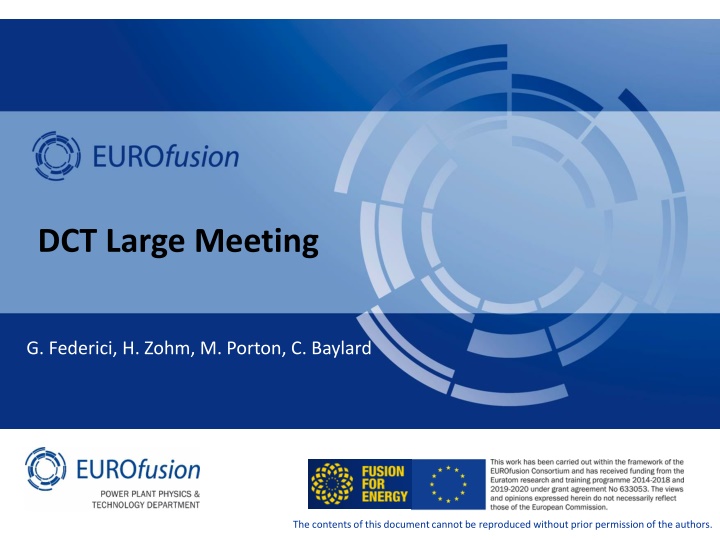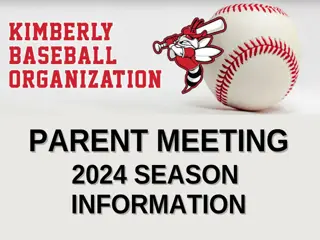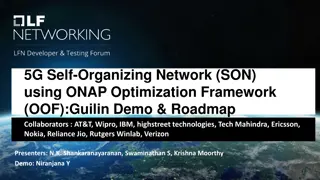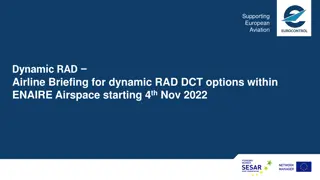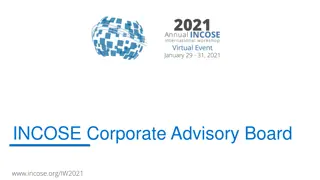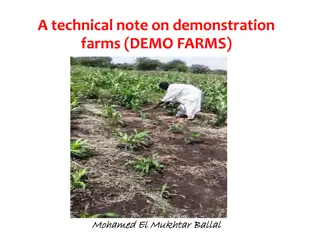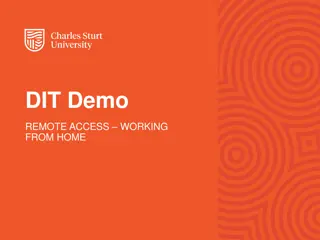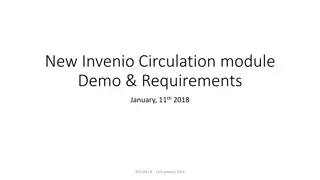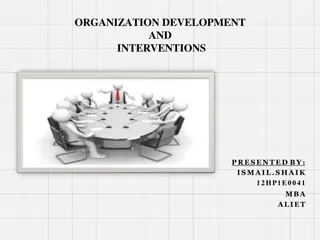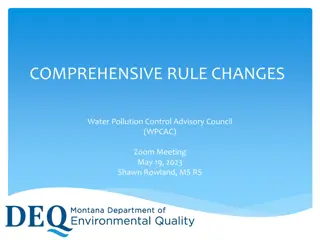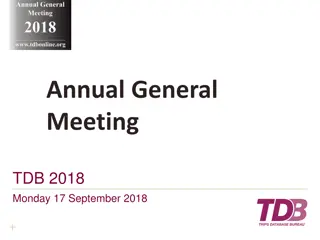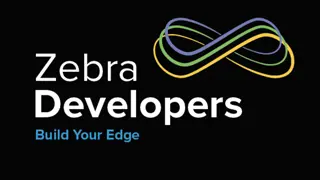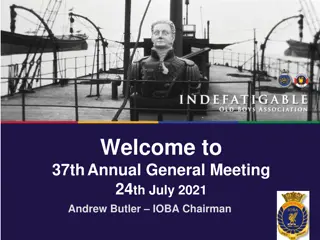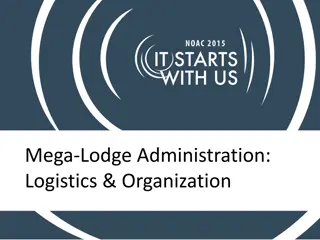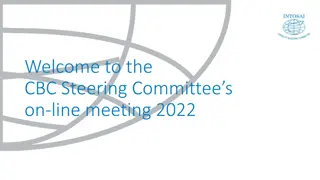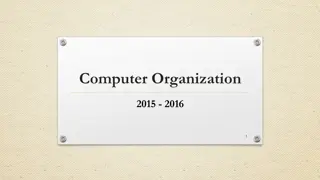DCT Large Meeting: Overview of DEMO New Organization
The DCT Large Meeting discusses the objectives and agenda of the DEMO New Organization, focusing on convergence towards a feasible plant architecture and plasma operation. It outlines the organization structure, staffing plan, and key presentations by leaders. The meeting emphasizes the need for collaboration, trust-building, and alignment with work packages. Key points include the concept of TF lead, system design, documentation, and future studies. The DEMO's central team is reinforced with a dedicated work package to enhance project organization and governance. Plasma is recognized as a crucial system, and efforts are made to strengthen system engineering and project management practices.
Download Presentation

Please find below an Image/Link to download the presentation.
The content on the website is provided AS IS for your information and personal use only. It may not be sold, licensed, or shared on other websites without obtaining consent from the author.If you encounter any issues during the download, it is possible that the publisher has removed the file from their server.
You are allowed to download the files provided on this website for personal or commercial use, subject to the condition that they are used lawfully. All files are the property of their respective owners.
The content on the website is provided AS IS for your information and personal use only. It may not be sold, licensed, or shared on other websites without obtaining consent from the author.
E N D
Presentation Transcript
DCT Large Meeting G. Federici, H. Zohm, M. Porton, C. Baylard The contents of this document cannot be reproduced without prior permission of the authors.
Objectives of the meeting To present to you Main messages You are part of the DCT DEMO New Organization Converge to a feasible plant architecture and to a attractive plasma operation and power exhaust scenario DCT managers WPDES Organization Learn how to work together and to trust each other Our objectives G. Federici et al.|DCT Large Meeting #1, Zoom Meeting: 27.4.2020| Page 2
Agenda # Title Time Who 1 New organisation of the DEMO Project 14:00 GFI 2 DCT organisation 14:10 GFI 3 Very brief personal presentation of DCT leaders 14:15 MPI, HZM, MPN, CBD Staffing plan and who is reporting to who? 4 Global organigram + SO 14:35 GFI 5 PSD 14:40 HZM 6 PSDD 14:45 MPN 7 PIO 14:50 CBD 8 WPDES Organisation 14:55 CBD, ABM 9 Concept of TF lead and Syst. Design Lead 15:05 CBD 10 Documentation 15:15 CBD 11 Glimpse of first studies 15:20 GFI 12 Questions/discussions 15:30 All G. Federici et al.|DCT Large Meeting #1, Zoom Meeting: 27.4.2020| Page 3
DEMO New organization: overview BoP (S) TFV (S) Colour filling = allocation BB (S) RM (S, TF) DEMO WP WP with strong DCT implication DCT with WPDES assistance PES (S) Plasma (S) Fusion Science Department P P Sector = work packages S: System TF: Transverse function (in close collaboration with DCT/PIO as it interfaces all systems, represented by: P P) SAE (TF) DIV (S) Circles and ring = type of activity Inner circle: plant architecture (and system design of systems not allocated to WPs) MAT (TF) DC (S) Intermediate ring : system design MAG (S) HCD (S) External ring : technology R&D For WP in charge of a system (S) WP Project Leader Improvements A reinforced DEMO Central Team assisted by a dedicated work-package Extend the Scope of Work of the DEMO Central team Setup an agile project organization with an incremental design approach Strengthen the DEMO governance and introduce a DEMO Design Authority A revised articulation between R&D and system design Plasma is now considered as a system Strengthen SE and PM culture and enforce procedures System Design Lead Tech. R&D Lead G. Federici et al.|DCT Large Meeting #1, Zoom Meeting: 27.4.2020| Page 4
DEMO new organization: DCT role G. Federici et al.|DCT Large Meeting #1, Zoom Meeting: 27.4.2020| Page 5
DCT Organization DEMO Central Team (DCT) Responsibilities of the division/office Gianfranco Federici Manage/ is in charge of/is responsible for Manage/ is in charge of/is responsible for Integration, Project Management (PM), System Engineering (SE), Tech. R&D coordination Project and Integration Office (PIO) Christophe Baylard (acting) Safety Office (SO) DEMO Safety and Licensing Maria Teresa Porfiri (acting) Manage/ is in charge of/is responsible for Manage/ is in charge of/is responsible for Plant System Design Division (PSDD) Michael Porton Plasma System Division (PSD) Hartmut Zohm Development of feasible architectures for the DEMO plant and its critical systems Establishment of a integrated operational plasma and exhaust scenario Missions and tasks of the division/office P S D 1 1 define the safety architecture and concepts provide technical physic input to be used for DEMO S O 2 2 define safety requirements at plant and rank 1 system identify and address critical knowledge gaps and uncertainties 1 1 develop feasible architecture of DEMO plant P I O organise, supervise and support all integration activity (functional and geometrical): define and execute transverse functions work plan (except safety) with the support of PSDD, PSD and the WP, implement layout and DMU (Digital Mock-Up) activities, tolerances management, etc. P S D D 2 develop feasible architecture of DEMO critical systems (i.e. magnets, breeding blanket, divertor, etc.) by guiding/ coordinating system design activities undertaken by the EU fusion laboratories 2 3 support DEMO Project Head to establish a proper PM and SE culture, setup PM and SE processes, methods, tools and templates, support DCT head to implement, enforce and monitor these methods and processes perform engineering analysis (at plant level & for the critical systems) and ensure quality of eng. analysis performed in the Work-Packages 3 coordinate tech. R&D activities performed in the WP G. Federici et al.|DCT Large Meeting #1, Zoom Meeting: 27.4.2020| Page 6
Conceptual Design Process Continuum and its Relationships to Critical Decision Development Process Design work entails making decisions about a continuous variety of options and trade-offs. Many of these trade-offs lead to adapting the work scope, adjusting resources, adapting personnel (experience and expertise), adjusting schedule, and performing tasks sequentially or in parallel to minimize risks or to optimize the critical work path. G2: Transition concept selection concept validation G2: Relatively stable design point (ie, machine parameters and plant configuration)/ Down-selection of design variants mostly completed. This is not end of the concept design phase!! G1.x Need intermediate gates (DSB!). Critical issues identified by G1 Plasma physics basis, including the plasma scenario, plasma exhaust, and first wall protection strategy H. Zohm Breeding blanket Sprints being organised under the supervision of F. Hernandez Remote maintenance and the blanket segmentation and extraction Sprints underway under the supervision of G. Janeschitz Building layout work underway with industry FWC G. Federici et al.|DCT Large Meeting #1, Zoom Meeting: 27.4.2020| Page 7
Conceptual Design Process Continuum and its Relationships to Critical Decision Development Process Concept Selection Phase G1 Concept Validation CD consolidation EDA Preparation G2 G3 G1.1 G1.x 2025 2027 2024 2020 2030 Define initial plasma control strategy Confirm plasma control strategy KDII1 In-vessel coils Select Driver Breeding blanket driver and coolant Confirm feasibility of design DEMO as a BB CTF KDII2 Complete integration studies of the plant and individual systems, including RAMI and cost assessment Select divertor configuration for initial integration studies Confirm divertor configuration and backup KDII3 Blanket handling strategy, requirements and selection criteria for a # of aspects e.g., blanket poloidal segmentation # of maintenance ports Select ex-vessel maintenance strategy ensuring upfront attention to contamination control KDII4 Important results from PEX ADC programme see next detailed slide Confirm Direct or indirect BOP/PCS KDII5 Select coolant BB Driver Conduct conceptual design of less critical systems Confirm safety strategy and first radiological containment barrier Define safety/ licensing reqs and constrains on the layout of tokamak building (RoX ITER) KDII6 Confirm feasibility of MF pumping solution KDII7 Full safety analyses Strategy to mitigate / control transients Fix HCD power requirements and systems-mix KDII8 Preliminary assumptions on Physics Basis and Route of Plasma Performance Optimization Define reqs tritium control strategy 2021 Cost trading choices Select WP TF and CS coils Others G. Federici et al.|DCT Large Meeting #1, Zoom Meeting: 27.4.2020| Page 8 2025 2026 2027 2023 2024 2022
Agile Organization: global view If needed CCB0 steering board confirms tech. CCB0 decisions (Incremental design) When required Tech. CCB decides Sprints are organized in groups aiming at one decision by CCB Study 1 S1 S2 S3 S4 S5 S6 Group A (for instance, plasma scenario) For instance, plasma scenario 2 is abandoned by tech. CCB0 Study 2 S1 S2 S1 Study 3 S2 S3 Group B (for instance, cooling media) S1 Study 4 S2 S3 S4 S6 S2 Study 5 S1 S3 S6 Group C (for instance, heating mix) Study 6 S1 S2 S6 G. Federici et al.|DCT Large Meeting #1, Zoom Meeting: 27.4.2020| Page 9
Agile Organization: zoom @ 1 sprint Scope of sprint Input data (assumptions, baseline elements, etc.) Resources and task repartition Organisation (communication, weekly meeting, etc.) Kick off meeting Execution of the agreed tasks Possible reassessment during sprint Execution (If not performed during execution) production of documentation of the work done Documentation Assessment of the work done Gap analysis with original objectives and backlog Decision to continue to another sprint Sprint review meeting G. Federici et al.|DCT Large Meeting #1, Zoom Meeting: 27.4.2020| Page 10
WPDES Organization No task specification one year in advance Agile Way of Working Work on demand by your coordinator in DCT (see staff plan) Gianfranco Federici is the WP lead Admin Thomas Franke is the overall coordinator in charge of all admin and practical questions We (will) put very general task specification in IMS corresponding to the profile Please keep track of the tasks performed, time spent and documents delivered A summary document (at the one official IMS deliverable) will be asked at the end of the year Normal tasks: your TC is in charge of defining the tasks to be performed Task coordinator (TC) Sprint tasks: the task force leader is in charge of defining the tasks TC is in charge of follow-up and shall be kept informed at all time when your work for a sprint TC in charge of task proper documentation, quality of the work done. Reviewer in IDM of the document In case of conflicting priorities, inform your TC. He will try to solve the issue with you or escalate if needed G. Federici et al.|DCT Large Meeting #1, Zoom Meeting: 27.4.2020| Page 11
WPDES Documentation We are looking for solution to collaborative document editing and for tasks tracking (for instance, JIRA & Confluence). We will installed later this year (after one or two pilots) Preamble Currently not decided yet, so please use currently standard ways (emails, meeting minutes, etc.) In any case, a summary document to be produced at the end of the year as official deliverable Tasks spec to be put into the summary document by the task coordinator For non sprint tasks Documents to be put in IDM and reference/link to them to be inserted into the summary document Depends on the decision of the task force leader and the way he/she uses to coordinate various actions For sprint tasks At least a summary of the actions performed shall be inserted into the summary document G. Federici et al.|DCT Large Meeting #1, Zoom Meeting: 27.4.2020| Page 12
3 (+ 1) Key roles in DEMO org. WP lead System Design Lead Tech. R&D lead: Technical and programmatic coordination of the 2 legs: explain what technology is used where ensure consistency of the R&D program with the ERICAs perform tech. survey in and outside fusion community point out inconsistencies between technologies promises and system needs write achievable system requirements with system design lead in case of issues or changes, assess impact Lead architect and project manager for all system design activities: collaborate with DEMO lead architect and DEMO integration office to ensure integration (functional and geometrical) of the system into DEMO plant lead all system design (SE) activities, in particular ensure integration of all sub- systems propose tech. solutions participate to solutions assessment Coordinate and review all documentation concerning system design Coordinates tech. R&D activities: conceive and implement the tech. maturity plan accountable for tech. R&D development follow-up all tech. R&D activities and report to WP lead in case of issues, delay, etc. proposes solutions to solve issues coordinate and monitor all documentation production concerning tech. R&D G. Federici et al.|DCT Large Meeting #1, Zoom Meeting: 27.4.2020| Page 13
Transverse function: what is it? Transverse function are functions/constraints for the plant that affect many (if not all) systems For instance: safety, nuclear integration, tritium, material, maintenance, etc. The main functions are allocated to one system System F1 F2 F3 TF1 TF2 TF3 MAG x x x x TFV x x x x DC x x x x x x x BOP x x x PHTS x x x G. Federici et al.|DCT Large Meeting #1, Zoom Meeting: 27.4.2020| Page 14
Transverse function Lead: their role The role of a transverse function lead is to ensure to DEMO head that the function is fulfilled, for this he/she propagate the requirements at system level (loads) define the requirements at plant level conceive, in collaboration with PSDD head, a concept/plant architecture in order to fullfill the function review system design (with respect to their function) issue design recommendation for the systems G. Federici et al.|DCT Large Meeting #1, Zoom Meeting: 27.4.2020| Page 15
